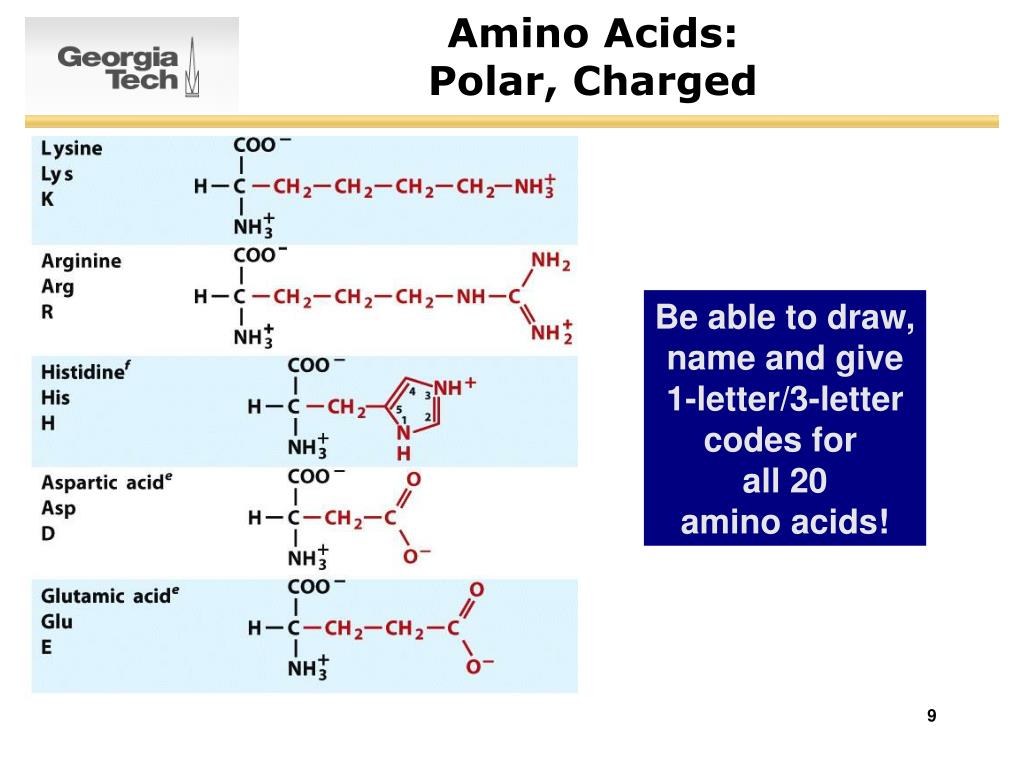


At a pH below their pI, proteins carry a net positive charge above their pI they carry a net negative charge. Amino acids that make up proteins may be positive, negative, neutral, or polar in nature, and together give a protein its overall charge. Biological amphoteric molecules such as proteins contain both acidic and basic functional groups. Such molecules have minimum solubility in water or salt solutions at the pH that corresponds to their pI and often precipitate out of solution. The pI value can affect the solubility of a molecule at a given pH. In the common case when the surface charge-determining ions are H +/HO −, the net surface charge is affected by the pH of the liquid in which the solid is submerged. Surfaces naturally charge to form a double layer. The net charge on the molecule is affected by pH of its surrounding environment and can become more positively or negatively charged due to the gain or loss, respectively, of protons (H +). The standard nomenclature to represent the isoelectric point is pH(I). The isoelectric point ( pI, pH(I), IEP), is the pH at which a molecule carries no net electrical charge or is electrically neutral in the statistical mean. Although no link between clustering and protein stability effects are found.PH at which a particular molecule, or the surface of a given solid, carries no net electrical charge Experimental evidence of arginine clustering is also presented, with head-to-tail electrostatic interactions and Gdn-Gdn self-association thought to be responsible. Glycine-GdnHCl mixtures are shown to also act on protein thermal stability similar to arginine, or in a synergistically stabilising manner (depending on the protein), meaning they have the potential to be developed as ‘designer excipients’ whereby bespoke ratios of the functional groups are used in place of arginine to exert the desired stability effects. Lysine and histidine, the other positively charged amino acids are also shown to affect protein thermal stability via a combination of their respective functional groups. This results in two stage concentration-dependent stability effects, with low cosolute concentrations (100 mM) causing less severe protein-specific effects. A detailed thermal stability study of three globular proteins in the presence of these three cosolutes demonstrated that arginine affects protein stability as an additive combination of its two functional groups: glycine and GdnHCl, with mechanisms originating from both groups. These two molecules are well-known stabilisers and destabilisers respectively. The major aim of this thesis was to establish whether arginine acts on protein stability as a combination of its two major functional groups: glycine and guanidinium hydrochloride (GdnHCl). A major problem with the existing data on arginine effects on protein stability is the lack of low concentration data, and the presence of salt-containing buffers. It is also undecided as to whether arginine is capable of destabilising at least some proteins. However, the mechanisms by which it exerts these distinctive effects are still open to conjecture. Arginine is an amino acid that is used extensively as an excipient in therapeutic protein formulations due to its unique ability to solubilise proteins and prevent aggregation without negative effects on protein stability.


 0 kommentar(er)
0 kommentar(er)
